
This photo shows the recording site of the 12th episode of the China Economic Roundtable, an all-media talk show hosted by Xinhua News Agency. (Xinhua/Li He)
BEIJING, Feb. 5 (Xinhua) -- Ice and snow have become an essential element in the Chinese people's quest for a more fulfilling life, driven by a booming winter tourism sector, experts noted during a recent economic roundtable.
The growth of ice and snow tourism has transformed how Chinese people perceive and experience winter, according to Dai Bin, president of the China Tourism Academy, who shared his views during the latest episode of the China Economic Roundtable, an all-media talk show hosted by Xinhua News Agency.
In the past, particularly in northeast China, where bitter winter temperatures are the norm, people tended to stay indoors during the cold months. However, a noticeable shift is occurring as more people now embrace outdoor activities during winter. Many people are flocking to Harbin, the capital of China's northernmost province of Heilongjiang, which is renowned for its abundant snowfall and stunning ice sculptures, to immerse themselves in the icy atmosphere.
Research by the tourism academy projects that over 500 million people will participate in ice and snow tourism during the peak season in 2024-2025, driving consumption by more than 600 billion yuan (about 83.7 billion U.S. dollars), said Dai.
The passion for ice and snow sports has also ignited, noted Ai Yu, an official with the General Administration of Sport of China. The scope of people participating in winter sports has extended beyond traditional northern regions; additionally, winter sports have now shifted from winter-only activities to year-round offerings that are accessible both indoors and outdoors, Ai highlighted.
Regions with rare snowfall are also capitalizing on the trend, as winter wonderlands created by artificial snow are popping up in southern China to meet growing demand, Dai added.
China aims to boost its ice and snow economy as a new growth sector, targeting an economic scale of 1.2 trillion yuan by 2027 and 1.5 trillion yuan by 2030, according to guidelines issued by the General Office of the State Council in November 2024.
The annual Central Economic Work Conference, held in December last year, also called for active efforts to develop the country's ice and snow economy. ■

Dai Bin, president of the China Tourism Academy, speaks at the 12th episode of the China Economic Roundtable, an all-media talk show hosted by Xinhua News Agency. (Xinhua/Li He)

Ai Yu, an official with the General Administration of Sport of China, speaks at the 12th episode of the China Economic Roundtable, an all-media talk show hosted by Xinhua News Agency. (Xinhua/Li He)
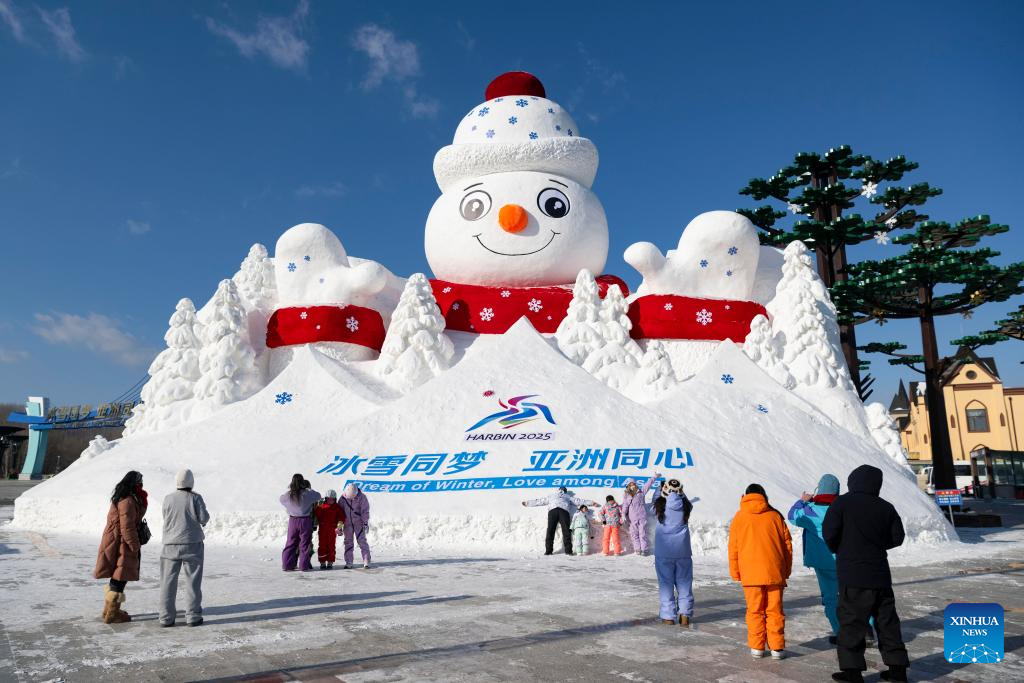
People visit the Yabuli Ski Resort along the Yaxue Road in Harbin, northeast China's Heilongjiang Province, Jan. 16, 2025. (Xinhua/Xie Jianfei)
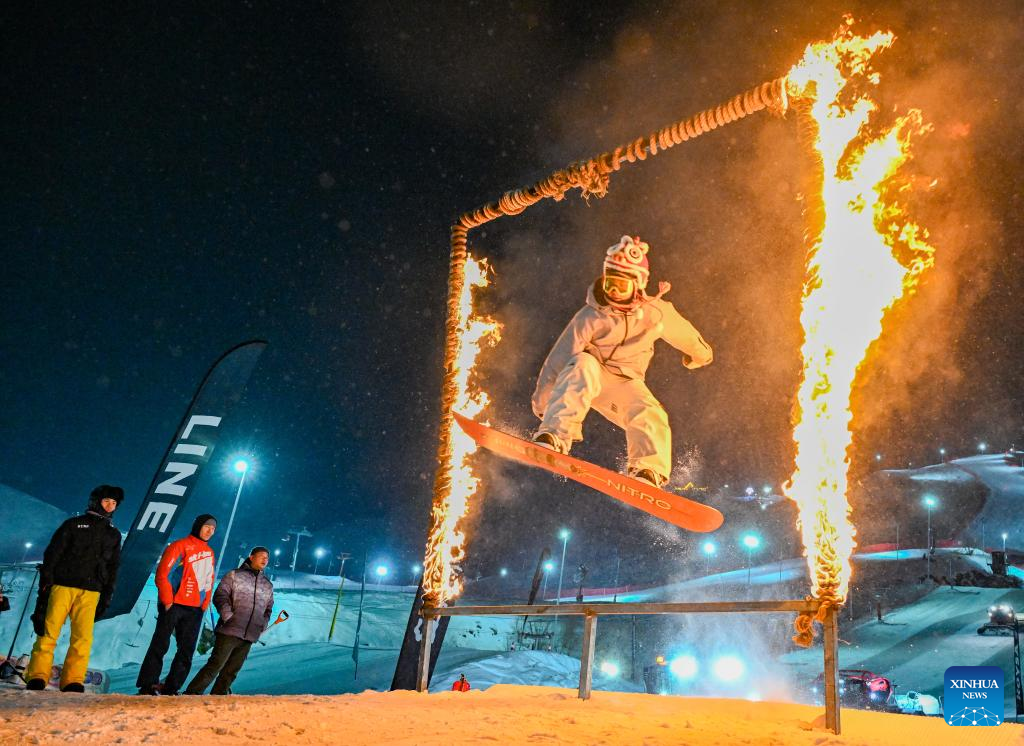
A tourist skis through flames at Jiangjunshan International Ski Resort in Altay, northwest China's Xinjiang Uygur Autonomous Region, Jan. 29, 2025. (Xinhua/Chen Shuo)
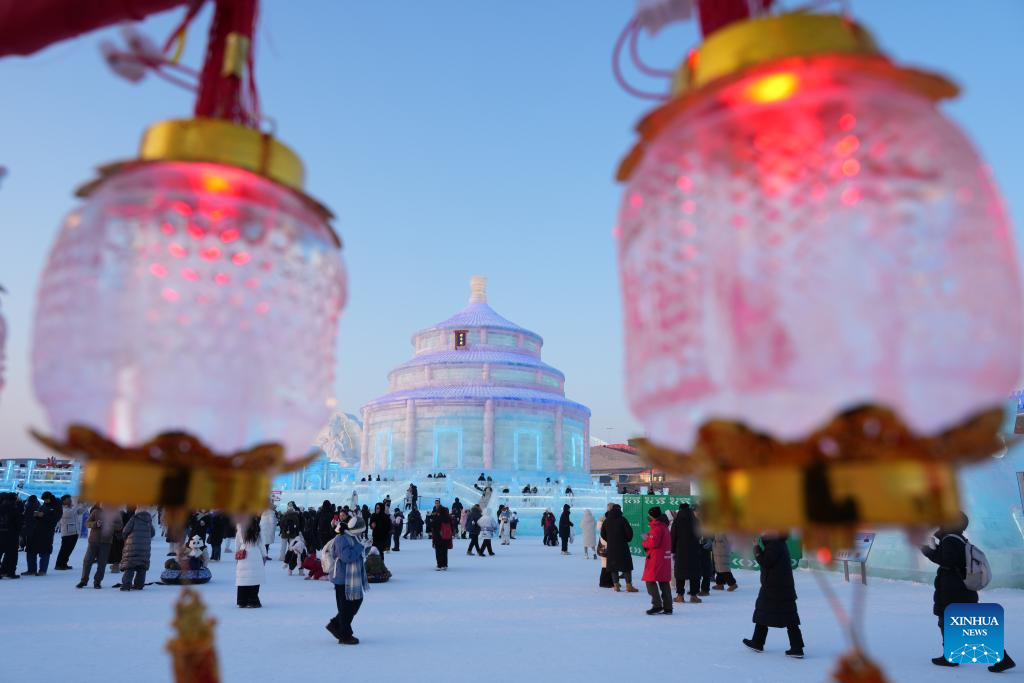
This photo taken on Jan. 23, 2025 shows tourists visiting an ice sculpture of the Hall of Prayer for Good Harvests against the foreground of ice lanterns at the Harbin Ice-Snow World in Harbin, northeast China's Heilongjiang Province. (Xinhua/Wang Jianwei)

Mascots of the 9th Asian Winter Games Harbin 2025 Binbin (L) and Nini are pictured at the 26th Harbin Ice-Snow World in Harbin, northeast China's Heilongjiang Province, Feb. 1, 2025. (Xinhua/Wang Song)
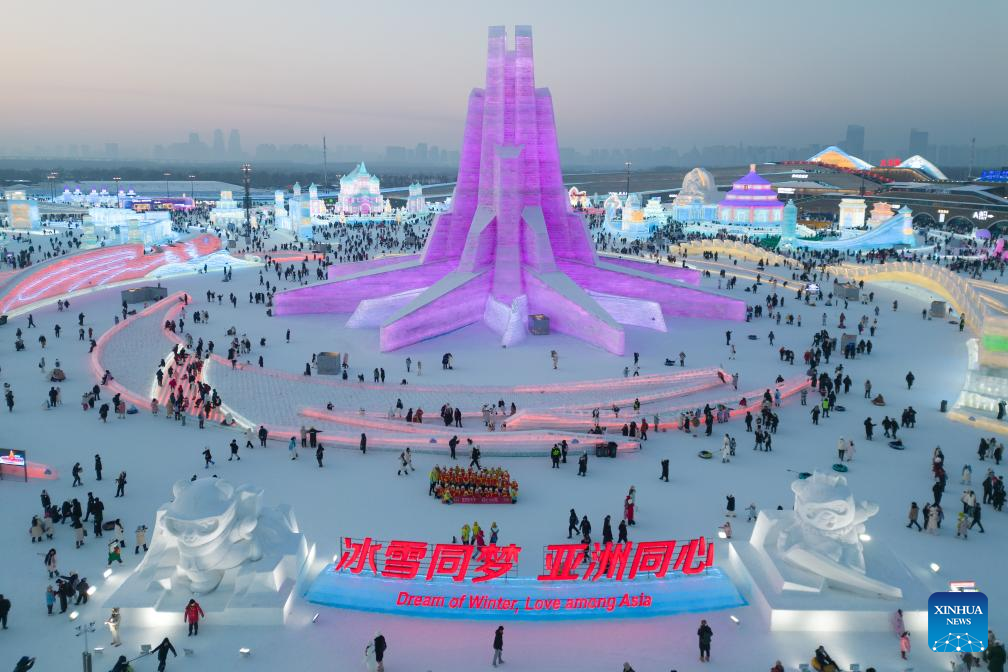
An aerial drone photo shows tourists visiting the Harbin Ice-Snow World in Harbin, northeast China's Heilongjiang Province, Jan. 23, 2025. (Xinhua/Zhang Tao)
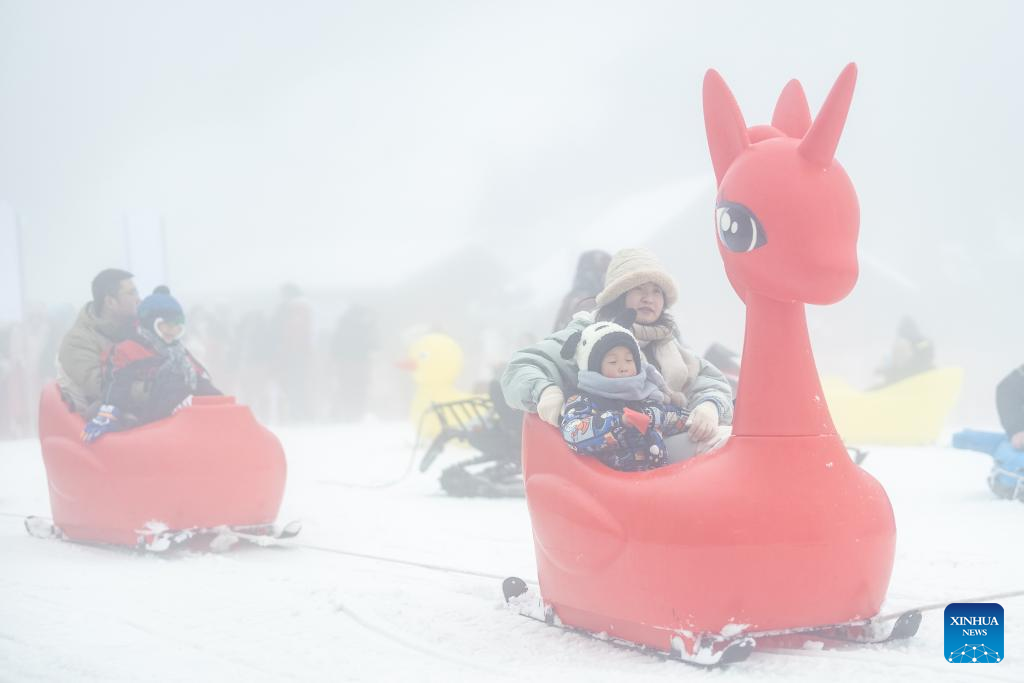
Tourists have fun at a snow resort in Nanchuan District, southwest China's Chongqing, Jan. 18, 2025. (Xinhua/Huang Wei)



